Ruth Bancroft, the first woman to graduate from UC Berkeley's architecture program and grandaughter to the original family rainmakers, saw her first succulent in the mid 1950s and started collecting them in clay pots. By the time she amassed 4000 potted succulents, it was decided she should have her own garden. The docent says she's 98 years old today, and still gardens. The Garden has incorporated and there's an appurtenant "conservation easement" on the land so it can never be developed.
A tree in the parking lot catches my eye.
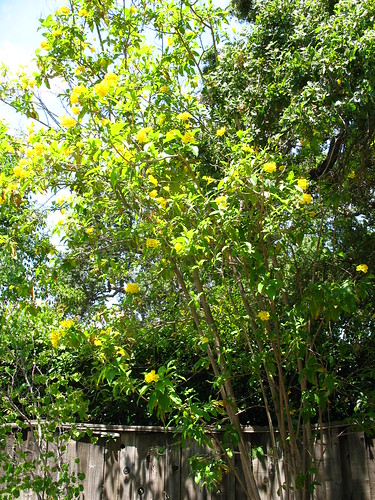
A yellow-flowering cestrum? No, I think it's Tecoma stans.
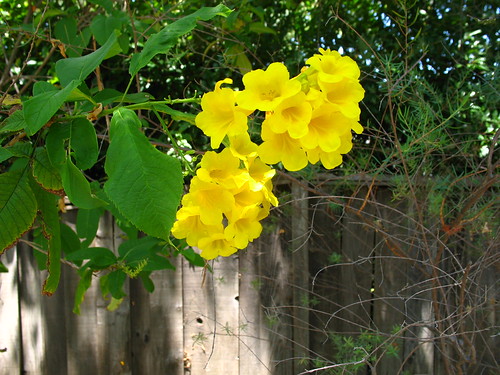
I like the leaf on this plant.
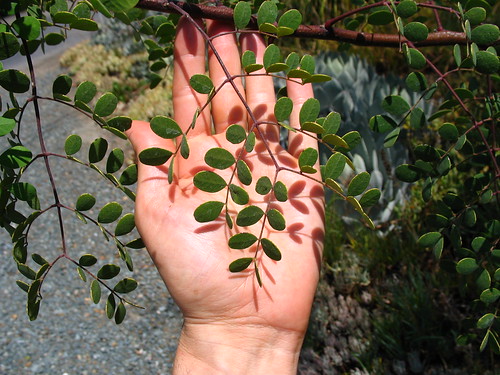
Inside the garden...A visitor asks what this is and the docent tells her it's a daisy. We know better. This is California's other native poppy.
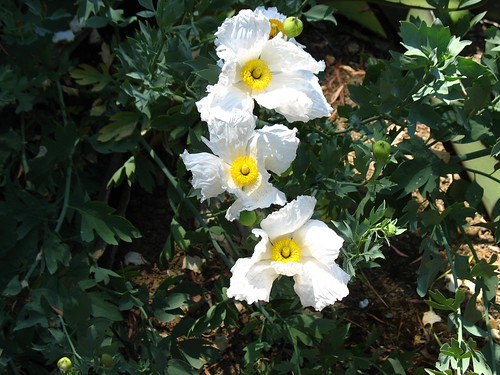
Romneya coulteri, aka Matilija Poppy or Fried Egg Flower. Tough and invasive, many call it a monster. It's hard to get started (very delicate roots) but once it gets going, stands easily reach six feet high and form expanding thickets. Flowers in late spring through summer.
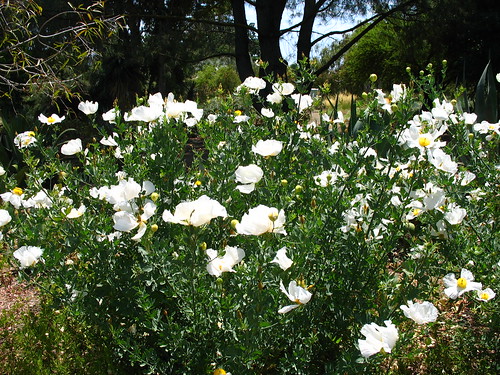
Moving on. Looking one way...
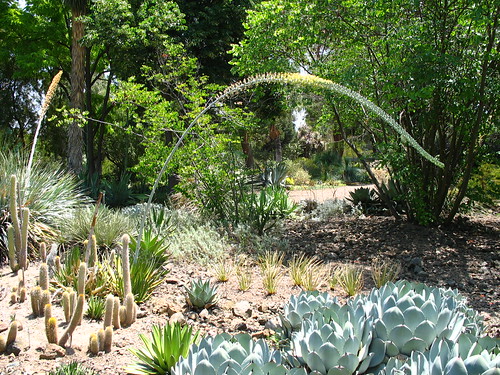
Looking another...
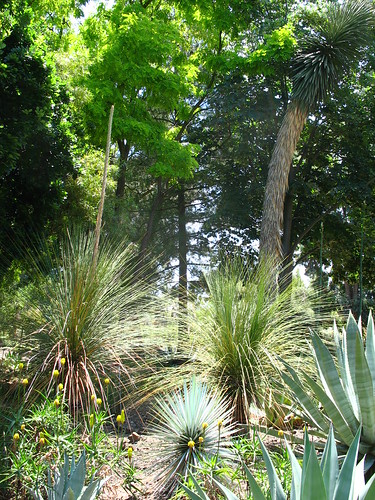
The perfect mix of control and uncontrol.
Echinocactus grusonii, Barrel cactus. Weaponized plants feel too threatening in my small yard. But sometimes I think it might be nice to have one of these.
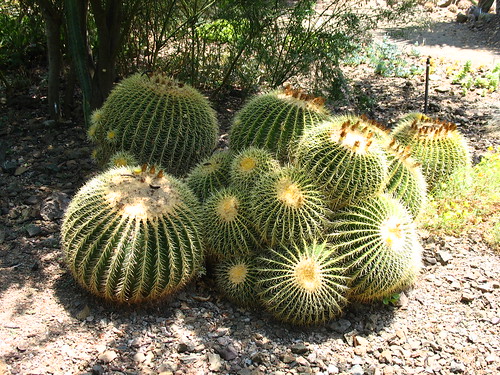
These snaky ones are hip right now.
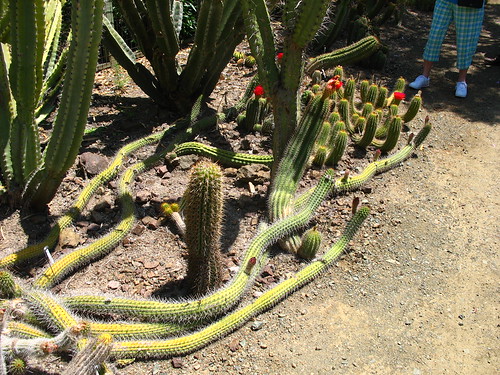
Nice flower.
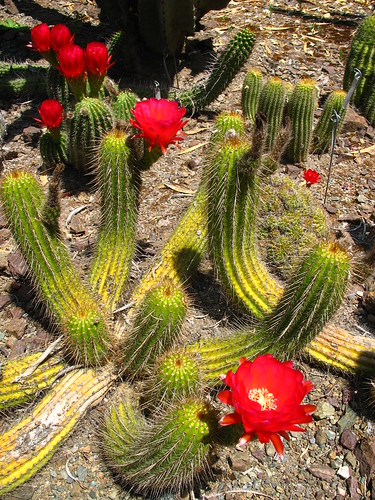
I love the green fissures running down the trunk of this thorny tree.
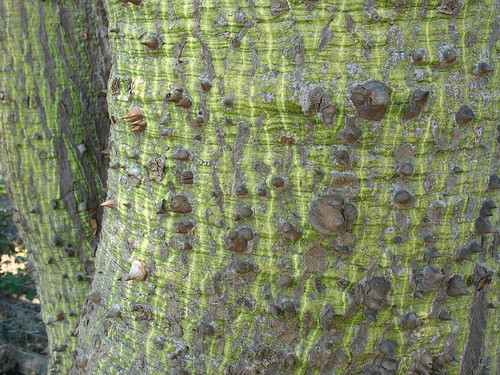
The thorns are cool too.
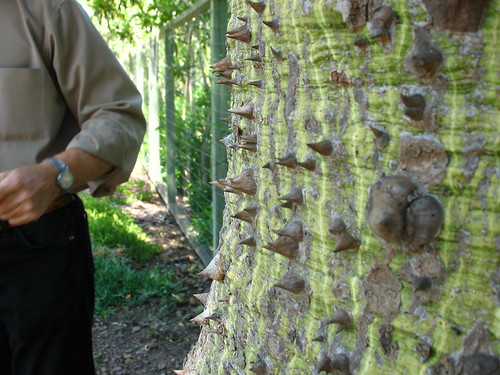
But in my garden, I'd prefer to live with the deeply fissured Valley Oak.
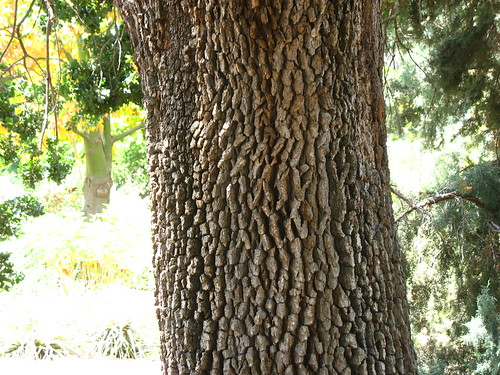
He called this a Bottle Tree. Does that make it
Adansonia gregorii? According to Botanica, the other common name for the Adansonia is "dead rat tree".
UPDATE: Ah, not Adansonia; this is Brachychiton rupestris. (Thanks, Sue!)
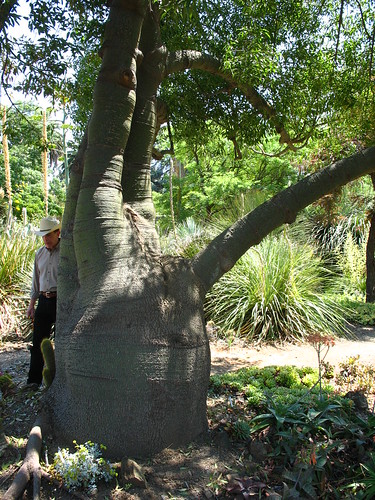
He says this is the endangered Brazilian wine palm. I don't know the Brazilian wine palm, but I know of two rare Chilean wine pams in San Francisco. They look different than this one, so perhaps it is Brazilian.
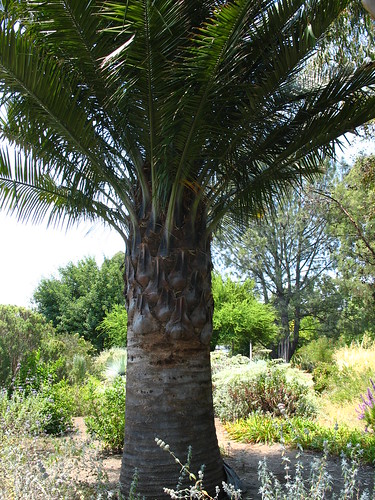
I like the plant growing over this lava rock.
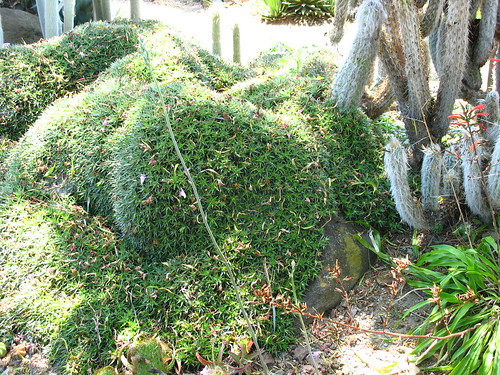
I had a euphorbia like this once. It was an indoor plant and I put it outside to get some sun one day, and it promptly died a very brown, gooshy death.
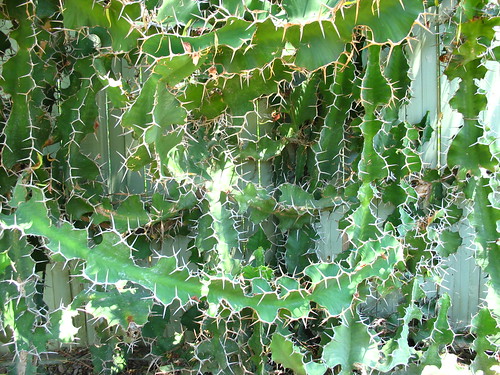
My camera didn't know what to focus on in this salvia. Is it 'Whirly Blue'? I'm not sure. Its fragrance suffused the garden.
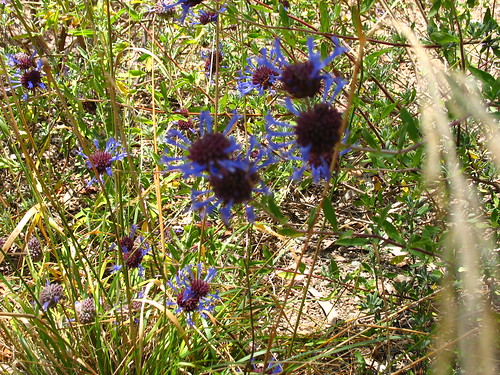
Back home, my little rock garden seems pathetic in comparison.
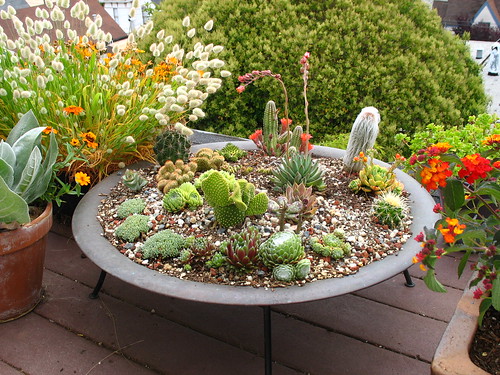
But I've got some flowers.
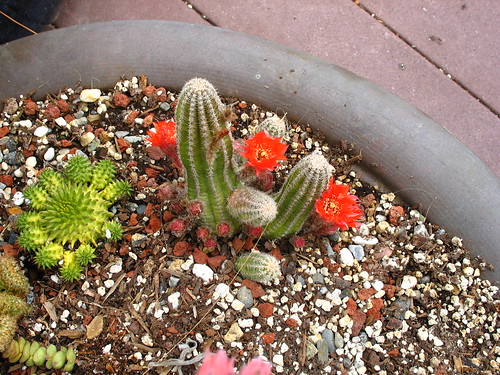
Unrelatedly, but next to the rock garden, I'm pleased with my combination of orange zinnia and silvery Verbascum bombyciferum in a dirty terracotta pot.
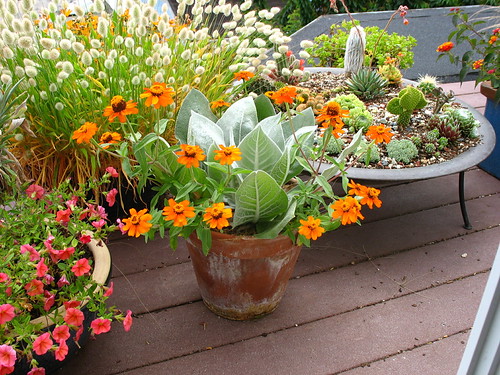
My last garden post here.

No comments:
Post a Comment